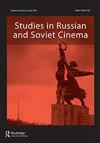Aleksei Balabanov: Brother (Kino Sputnik 5)
IF 0.4
0 FILM, RADIO, TELEVISION
引用次数: 0
Abstract
illuminating it through the work of Deleuze and Bergson on duration, memory and the filmimage, with reference to Merleau-Ponty’s late philosophy, specifically his notions of intertwining/chiasm and the flesh of the world. The inclusion of these three philosophers, among others, enhances the enquiry into the different ways in which the film achieves transcendence. Starting with the film’s final dream scene, Efird explores the instability and fluidity of subjectivity as it interacts with temporality, spatiality and memory – in essence demonstrating the ubiquity of intersubjectivity as that of a primal intercorporeality. This intercorporeality, or ‘interpenetration’ (141), is shown to exist not just between the different characters, but also between them and the material and natural worlds, between their actual and virtual realities and, further, between personal and historical fields. The text itself in this chapter is a profound meditation into the diverse ways in which Tarkovsky’s camera makes visible the realms of an invisible, pre-verbal, all-encompassing state that is best captured by notions such as transcendence and the absolute. Throughout the book, Efird burrows into the sinews of the film, painstakingly attending to how the film-maker ‘attempts to create a kind of aperture into the Absolute through a seemingly paradoxical concentration on the physical world’ (137). How deliberate was Tarkovsky in rendering to film the deeper structures, meanings and relationships that Efird’s book posits and explores? Whatever the answer, this text elucidates much that frequently remains absent from analyses of Ivan’s Childhood and, in the process, reveals something crucial about the complex interlacing of temporality, subjectivity, memory and experience – within and beyond the film. Furthermore, it addresses with fierce commitment the ways in which ‘eternity opens through the material reality of the present moment’ (140) in Tarkovsky’s work.通过德勒兹和柏格森关于持续时间、记忆和电影影像的著作,以及梅洛-庞蒂的晚期哲学,特别是他关于交织/交错和世界肉体的概念,来阐明这一点。这三位哲学家的加入,加强了对电影实现超越的不同方式的探索。从影片最后的梦境场景开始,埃菲尔德探索了主体性与时间性、空间性和记忆相互作用时的不稳定性和流动性——从本质上讲,主体性与原始的肉体间性一样无处不在。这种相互的肉体性,或“相互渗透”(141),不仅存在于不同的人物之间,而且存在于他们与物质世界和自然世界之间,存在于他们的现实和虚拟现实之间,更进一步,存在于个人和历史领域之间。这一章的文本本身是对塔可夫斯基的相机以各种不同的方式将一个不可见的、言语前的、无所不包的国家的领域呈现出来的深刻思考,这种状态最好是通过超越和绝对等概念来捕捉的。在整本书中,埃菲尔德深入研究了这部电影的精髓,煞费苦心地关注电影制作人如何“试图通过看似矛盾的对物质世界的专注,创造一种进入绝对的通道”(137)。塔可夫斯基在向电影呈现埃菲尔德书中所假定和探索的更深层次的结构、意义和关系时,有多深思熟虑?无论答案是什么,这篇文章阐明了很多在对伊万童年的分析中经常缺失的东西,在这个过程中,揭示了一些关于时间性、主观性、记忆和经验的复杂交织的关键问题——在电影内外。此外,它以强烈的承诺阐述了塔可夫斯基作品中“永恒通过当下的物质现实打开”(140)的方式。
本文章由计算机程序翻译,如有差异,请以英文原文为准。
求助全文
约1分钟内获得全文
求助全文

 求助内容:
求助内容: 应助结果提醒方式:
应助结果提醒方式:


